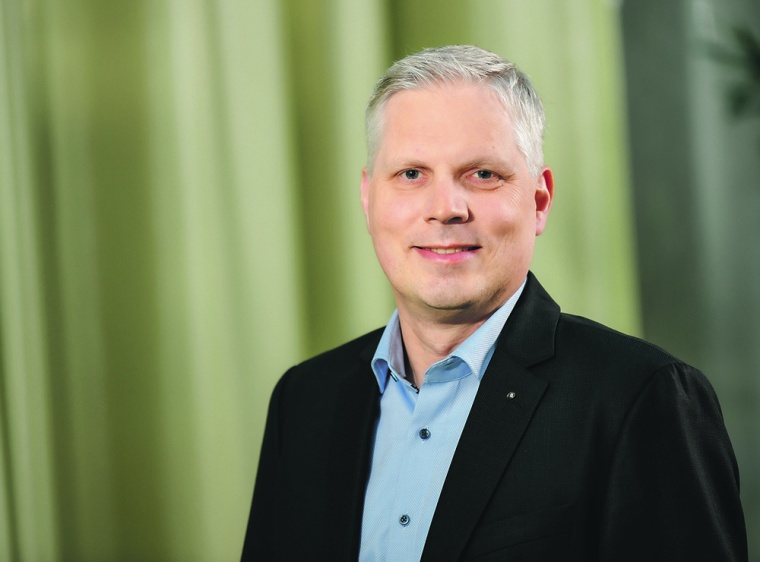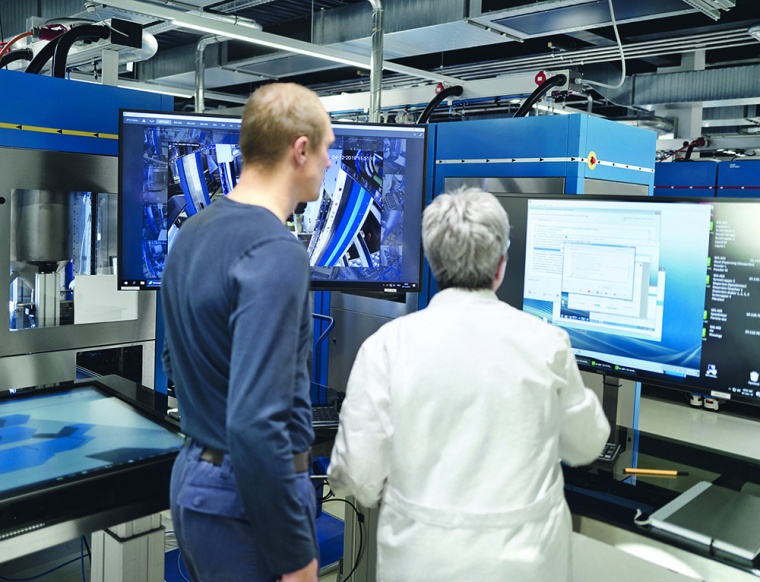Creating added value through innovation and transformation
As a global specialty chemicals company, Altana develops innovative technologies, solutions, and products with a clear customer focus. The company aims to strengthen and expand this position in the long term. The topic of digital transformation plays a key role.

As part of the CHEManager series on the digitization strategies of well-known chemical and pharmaceutical companies, Stefan Gürtzgen interviewed Axel Vogelbruch, Chief Digitization Officer (CDO) Altana. Vogelbruch explains which technologies are of particular importance to him against the backdrop of constantly mounting customer and market requirements.
CHEManager: Mr. Vogelbruch, a general question: What significance does digitalization have for the future path of your company? What is important in the field of specialty chemicals?
Axel Vogelbruch: As a specialty chemicals group, we provide our customers with solutions. In the future, it will be even more important to quickly find efficient, sustainable, and high-quality solutions while taking changing regulatory requirements into account and building resilient supply chains. Orchestrating these issues with our customers can only be ensured based on data and the digital use of data. To achieve this, a wide variety of channels must be used and processes must be supported by means of reliable and rapid knowledge management. At Altana, for example, the company’s websites are constantly being expanded, including customer portals. The latter have been developed with the customer in mind to a great extent. They enable self-services 24/7, simple sample orders, and inquiries to our experts.
As you can see, digitization is very important to us. We have made further investments in this area. In particular, I should mention the high-throughput screening system, the introduction of an electronic laboratory notebook, and product information management. These, together with ERP and CRM systems, are digital building blocks that need to be linked together. This can then be supplemented by data analysis systems and extensive use of artificial intelligence.
What do you see as the most important drivers of digitization?
A. Vogelbruch: The biggest drivers are knowledge management in research and application technology and simple and rapid availability of this knowledge within the company. In concrete terms, that means we need to integrate our knowhow more and more into our digital channels in order to be able to make even more targeted product recommendations and create faster access to our experts.
In addition, it will be important in the future to provide more information about our products and services – for example, about regulatory requirements such as the Supply Chain Sourcing Obligations Act, the carbon footprint, and product availability. These are just a few of the market requirements. This data can only be collected using digital tools within processes and IT systems and must be subsequently exchanged digitally by the parties involved in a secure manner. Digital processing and delivery will further improve the services and benefits for our customers.
You mentioned the use of artificial intelligence. How are you addressing this issue, and are there other innovative technologies you are looking at in more detail?
A. Vogelbruch: We are looking very closely at the added value that artificial intelligence can provide us and our customers. The possible applications are diverse and generate potential throughout the company. Examples are quality assurance in production and the analysis of laboratory results from research and application technology. Other technologies, such as virtual reality and augmented reality, have more specific uses. We also have initial applications in use in these areas. Apart from presenting the company at trade fairs with VR support, AR technology is being used for internal communication, training, expert support, and visual viewing of experiments. Our customers benefit from this as well, because the use of AR brings us together efficiently with them and thus helps us quickly develop solutions together, even when there is a great distance between us.
Can you give some examples of where and how you have successfully implemented your digital strategy?
A. Vogelbruch: Digital transformation is a very dynamic and continuous process. On the one hand, it requires a certain degree of flexibility, but it also requires a clear focus on relevant topics. For us, in addition to building a digital core, the focus is on digital customer interaction, the use of data from the various systems, and the transformation toward end-to-end processes. In concrete terms, this means that in order to meet customer needs even better digitally, we have had to improve the websites from a customer experience perspective. To this end, background systems were connected and the architecture adapted. We are also testing the use of artificial intelligence and machine learning in pilot projects. Basically, we have designed the system requirements in such a way that we can easily integrate further initiatives and implement them in a networked manner.
“It's about being able to use digital opportunities profitably.”
What do you consider the essential elements of this transformation process?
A. Vogelbruch: The basic building blocks for driving the digital transformation process forward are true customer centricity, efficient use of data, and sustainable change management. This is the only way to really drive transformation as a process. As a company, we aim to develop innovative solutions that make everyday products better and more sustainable. But we can only achieve this goal together with our customers. Only by understanding our customers, involving them in our developments, and integrating their continuous feedback into our processes can we develop products that create added value.

As regards data utilization, how do you proceed?
A. Vogelbruch: The basis for this is that we ensure data and its quality and availability. To do so, both aspects must already be considered in the process design, in master data governance, and in the use of standard software. After all, it must be possible to generate data validly and continuously via processes and then evaluate and analyze it reliably. Today, this is no longer done in data silos, but in end-to-end processes across internal and external system boundaries. Examples are the Supply Chain Sourcing Obligations Act and the calculation of the carbon footprint.
Several systems must be linked together to provide the necessary data. These include cloud services for individual functions, platforms, customer and supplier systems, and government agency systems.
So in the coming years there will be an increased need for training to align the organization to meet these challenges. It is therefore essential to support the organization as well as the employees, for example through training, and to accompany them in the change process. Change management refers to the way processes are designed and harmonized, and the way data is collected and processed and analyzed. The aim is to work together to find the best possible solution within the framework of the software used so that the digital opportunities can be used profitably.
What are your goals for the future in terms of digitization?
A. Vogelbruch: We want to further intensify digital collaboration with our customers. The goal is to expand and upgrade our digital service offer. This allows our customers to meet market requirements better, faster, more sustainably, more transparently, under constantly changing conditions, safely, and in compliance with regulations. In particular, the link to the measuring devices of Altana’s Byk division, for example, holds potential in terms of quality assurance and cooperation with our customers, and being anonymous thanks to blockchain technology, for example. In this way, artificial intelligence could provide product recommendations based on a description of the requirements. On this basis, a simple sample order is generated, which is then jointly checked and controlled with the help of our measuring devices and augmented reality.
♦♦♦♦♦♦♦♦♦♦♦♦♦♦♦♦♦♦♦♦♦♦♦♦♦♦♦♦♦♦♦♦♦♦♦♦♦♦♦♦♦♦♦♦♦♦♦♦♦♦♦♦♦♦♦♦♦♦♦♦♦♦♦♦♦♦♦♦♦♦♦♦
Personal Profile
As Chief Digitalization Officer (CDO) Altana AG, Axel Vogelbruch is driving the company’s digital transformation. He started his career at Altana in 2010 as Head of IT Applications in the Byk division. Since then, he has held various management positions at Byk. He has been CDO of the Altana Group since the beginning of 2023. Before joining the Wesel-based specialty chemicals group, Axel Vogelbruch worked in process and SAP consulting. Previously, he had received a degree in mechanical engineering at RWTH Aachen University.
♦♦♦♦♦♦♦♦♦♦♦♦♦♦♦♦♦♦♦♦♦♦♦♦♦♦♦♦♦♦♦♦♦♦♦♦♦♦♦♦♦♦♦♦♦♦♦♦♦♦♦♦♦♦♦♦♦♦♦♦♦♦♦♦♦♦♦♦♦♦♦♦
















